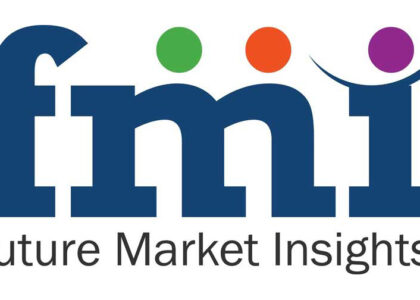
The South Korea Sea Buckthorn Market is poised for significant expansion over the next decade, with a projected compound annual growth rate (CAGR) of 12.3% from 2024 to 2034. The growing popularity of natural health supplements, rising awareness of sea buckthorn’s health benefits, and increasing demand for natural skincare ingredients are driving the market’s growth in South Korea.
The sea buckthorn market is expected to be valued at USD 393.1 million in 2024. Sea buckthorn’s healthy properties are not a secret and have seen the product become a household name in households, especially in Asia and Europe. Thus, the market has a historical precedent to grow upon.
The market is set to register a CAGR of 10.1% over the period from 2024 to 2034. As functional foods become more commonplace, the sea buckthorn market benefits. The ability of sea buckthorn to be blended and molded into juices, shakes, and pies, among others, is lending the product significant growth prospects.
By 2034, the market is set to acquire a valuation of US$ 1,025 million. Apart from food, the use of the product in cosmetic products is set to add considerable value to the market. As the cosmetic industry switches towards organic ingredients, sea buckthorn is a prominent example of the type of ingredient being preferred by consumers.
As part of its functionality in food, sea buckthorn is also finding notable application in dietary supplements. As dietary supplements become more common, due to a combination of factors like the aging population and more people taking up sports, sea buckthorn’s use in them is supposed to grow.
Key Market Drivers:
- Rising Demand for Natural Health Supplements: Sea buckthorn is becoming increasingly popular as a natural health supplement in South Korea, driven by consumers’ growing interest in natural and organic products. Rich in vitamins, antioxidants, and essential fatty acids, sea buckthorn offers a variety of health benefits, including improved immune function, cardiovascular support, and enhanced skin health. As consumers shift toward preventive healthcare, sea buckthorn-based supplements are witnessing increased demand.
- Awareness of Sea Buckthorn’s Nutritional Value: Sea buckthorn is packed with nutrients such as vitamins C, A, and E, as well as omega-3, 6, 9, and the rare omega-7 fatty acid. These properties make it an attractive ingredient in functional foods and dietary supplements, which are becoming increasingly popular in South Korea. The market is benefiting from rising awareness among consumers about the diverse health benefits of sea buckthorn, including its anti-inflammatory and anti-aging effects.
- Expanding Natural Skincare and Cosmetics Industry: South Korea is known for its thriving beauty and skincare market, and sea buckthorn has become a sought-after ingredient in natural skincare products. Its high vitamin C content and antioxidant properties help promote skin regeneration, reduce wrinkles, and combat oxidative stress. As consumers become more inclined toward natural and organic skincare products, the demand for sea buckthorn in cosmetic formulations is expected to grow significantly.
- Growing Preference for Sustainable and Organic Products: The trend towards sustainability and eco-friendly products is another factor driving the demand for sea buckthorn in South Korea. Consumers are increasingly seeking products made from sustainably sourced and organic ingredients. Sea buckthorn, which is often harvested through sustainable farming practices, is gaining traction among eco-conscious consumers, further boosting market growth.
Key Market Segments:
- Dietary Supplements: Sea buckthorn is widely used in dietary supplements due to its rich nutrient profile. As consumers in South Korea become more health-conscious, the demand for sea buckthorn-based supplements is rising. These supplements are often used for their immune-boosting, anti-inflammatory, and skin health benefits.
- Skincare and Cosmetics: Sea buckthorn’s ability to improve skin elasticity, hydration, and protection from environmental stressors has led to its increasing use in skincare products. South Korean beauty brands are incorporating sea buckthorn into various skincare formulations, including serums, creams, and oils, targeting consumers looking for natural beauty solutions.
- Functional Foods and Beverages: Functional foods and beverages fortified with sea buckthorn are gaining popularity in South Korea. Sea buckthorn’s unique combination of vitamins, antioxidants, and fatty acids makes it an ideal ingredient for health-conscious consumers looking to enhance their diets with natural, nutrient-rich foods.
Challenges and Opportunities:
Challenges:
- Supply Chain Constraints: Sourcing sea buckthorn in sufficient quantities can be challenging, as it is primarily grown in cold, mountainous regions. Any disruption in the supply chain could impact the availability of sea buckthorn-based products in South Korea.
- High Production Costs: The extraction and processing of sea buckthorn can be expensive, which may lead to higher prices for sea buckthorn-based products, potentially limiting market growth.
Opportunities:
- Product Innovation: There is significant potential for product innovation in the South Korea sea buckthorn market. Manufacturers can explore new formulations and applications for sea buckthorn in dietary supplements, cosmetics, and functional foods to attract a broader consumer base.
- Growing E-commerce Market: The rise of e-commerce in South Korea provides an opportunity for sea buckthorn product manufacturers to reach a wider audience. Online platforms are becoming increasingly important for the distribution of health supplements and natural skincare products.
“While the market faces some obstacles, like improper supply of raw material on occasion, the overall prospects of it are positive. Use of sea buckthorn for the making of alcoholic drinks is filled to the brim with potential for investors,” says Nandini Roy Choudhury (Client Partner for Food & Beverages at Future Market Insights, Inc.).
Key Takeaways from the Sea Buckthorn Market
- The sea buckthorn market is projected to be valued at US$ 393.1 million in 2024.
- Sea buckthorn predominantly comes in the form of juice. Juice is expected to account for 34% of the market share in 2024.
- Dietary supplement tops the application segment. For 2024, dietary supplements are anticipated to account for 28% of the market share.
- South Korea is a promising country for the market. For the forecast period, the CAGR for South Korea is estimated to be 12.3%.
- China and Japan are pegged to be lucrative countries for the market. The CAGR for China and Japan over the forecast period is predicted to be 10.8% and 11.8% respectively.
- The market is expected to register a CAGR of 11.4% in the United Kingdom over the forecast period.
Competition Analysis of the Sea Buckthorn Market
The market is diverse, as companies of all scales have room to thrive. Partnerships are common in the sector, especially with companies in end user industries. Some of the prominent companies in the market include SeabuckWonders, Wellsash, W.S. Badger Company Inc., and Natures Aid Ltd.
Recent Developments in the Sea Buckthorn Market
- In July 2023, the 30 Day product was launched by Australia-based Mud Organics in the United States. The product contains sea buckthorn
- In 2024, a study was published by researchers from Memorial University, Canada, expounding on the benefits of sea buckthorn in fighting obesity.
Browse full Report: https://www.futuremarketinsights.com/reports/sea-buckthorn-market
Explore FMI’s Extensive Coverage in the Food and Beverages Domain:
The demand for fermented chymosin is projected to generate nearly USD 6.7 billion in revenue by 2032, increasing from USD 4.6 billion in 2022, with a CAGR of 3.5% during the forecast period.
The fermented protein market value is projected to be valued at USD 1,061.8 million in 2023 and is expected to reach USd 2,130.9 million by 2033, growing at a CAGR of 7.7%.
The global demand for fermented feed is expected to surge at a CAGR of 7.8%, with the market projected to grow from USD 19.9 billion in 2024 to USD 42.1 billion by 2034.
The malt ingredients market size is estimated at USD 25.7 billion in 2023 and is expected to grow to USD 43.7 billion by 2033, with a CAGR of 5.4% during the forecast period.
About Future Market Insights (FMI)
Future Market Insights, Inc. (ESOMAR certified, recipient of the Stevie Award, and a member of the Greater New York Chamber of Commerce) offers profound insights into the driving factors that are boosting demand in the market. FMI stands as the leading global provider of market intelligence, advisory services, consulting, and events for the Packaging, Food and Beverage, Consumer Technology, Healthcare, Industrial, and Chemicals markets. With a vast team of over 400 analysts worldwide, FMI provides global, regional, and local expertise on diverse domains and industry trends across more than 110 countries.
Contact FMI:
Future Market Insights Inc.
Christiana Corporate, 200 Continental Drive,
Suite 401, Newark, Delaware – 19713, USA
T: +1-347-918-3531
For Sales Enquiries: sales@futuremarketinsights.com
Website: https://www.futuremarketinsights.com
LinkedIn| Twitter| Blogs | YouTube

